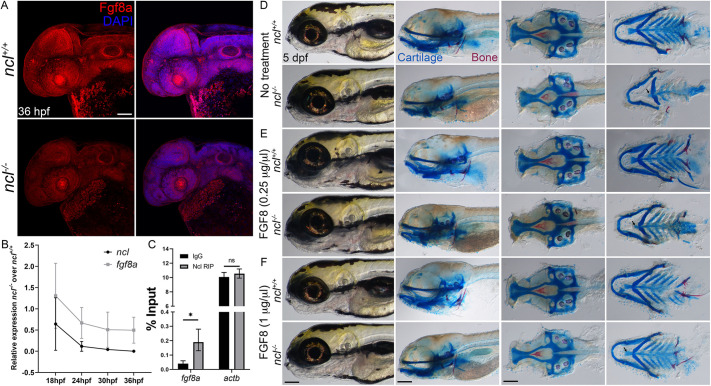Fig. 5.
Nucleolin regulates Fgf8a expression. (A) Immunostaining of 36 hpf ncl+/+ and ncl−/− embryos with an Fgf8a-specific antibody reveals reduced expression of Fgf8a in ncl−/− embryos (n=15). (B) qPCR using craniofacial tissues from ncl+/+ and ncl−/− embryos at 18, 24, 30 and 36 hpf indicates that ncl and fgf8a expression gradually reduce over time (n=10 per replicate). (C) RNA immunoprecipitation followed by qPCR indicates higher binding of fgf8a mRNA to Nucleolin compared with the IgG control. actb was used as a negative control (n=100 per replicate per condition). The y-axis indicates fold change of RNA pulldown compared with its absolute expression in the embryos. (D-F) Skeletal preparations of 5 dpf ncl+/+ and ncl−/− larvae as controls (D) for 0.25 µg/µl (E) and 1 µg/µl (F) FGF8 exogenous treatment. Exogenous FGF8 rescued the cranioskeletal phenotype of ncl−/− larvae (n=45). Black arrows indicate the improvement of the basihyal phenotype in FGF8-treated larvae. All experiments were performed three times. Scale bars: 100 µm (A); 70 µm (D-F). Data are represented as mean±s.d. ns, not significant; *P<0.05 (two-tailed, paired Student's t-test).

